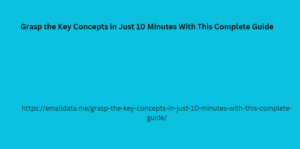In the age of instant messaging and constant notifications, email remains a cornerstone of professional communication. But let’s face it, hitting “send” is often just the first chapter. Ensuring your message is received, understood, and acted upon often requires the crucial art of the follow-up email.This guide equips you with the tools and strategies to craft effective follow-up emails, those gentle nudges that keep your message at the forefront of the recipient’s mind and increase your chances of a successful outcome.
Why Follow Up? The Power of Persistence
We’ve all been there: you send a well-crafted email outlining a proposal, requesting information, or scheduling a meeting, only to be met with radio silence. Here’s where the follow-up email shines.
- Combating Inbox Overload: Inboxes are bombarded with messages daily. Your initial email might get buried under a mountain of new information. A well-timed follow-up gently resurfaces your message and reminds the recipient of its importance.
- Clarifying Expectations: Sometimes, the initial email might leave room for misinterpretation. A follow-up allows you to reiterate key points and ensure everyone is on the same page.
- Demonstrating Professionalism: Following up shows initiative and professionalism. It conveys a genuine interest in the recipient’s response and keeps the communication flowing.
Crafting the Perfect Follow-Up: Striking the Right Balance
A good follow-up email is a delicate dance between persistence and pestering. Here are some key ingredients for crafting the perfect nudge:
- Timing is Everything: Don’t bombard the recipient. Space your follow-up appropriately. For urgent matters, a day or two might be warranted. For non-critical emails, wait a week or more.
- Subject Line Savvy: Don’t just write “Following Up.” Craft a subject line that reminds the recipient of the original email’s purpose without being pushy. For instance, “Following Up: [Original Subject Line]” works well.
- Keep it Concise and Clear: Respect the recipient’s time. Be clear and concise in your follow-up. Briefly restate the purpose of your original email and politely request a response.
Beyond the Basics: Tailoring Your Follow-Up Approach
While a basic follow-up structure exists, tailoring your approach based on the recipient and situation is key.
- Following Up with Colleagues: Maintain a friendly and professional tone. A simple reminder like “Hi [Name], Just checking in on my previous email regarding [topic].” is often effective.
- Following Up with Potential Clients: Strike a balance between enthusiasm and respect. Reiterate the value proposition you offer and ask for a specific action, like scheduling a call.
- Following Up with Busy Professionals: Acknowledge their time constraints and offer alternative options for communication. For instance, “I understand you might be busy. Would a brief phone call be more convenient?”
The Art of Persistence with Grace: Navigating Multiple Follow-Ups
In some cases, one follow-up might Grasp the Key Concepts in Just 10 Minutes With This Complete Guide not be enough. Here’s how to navigate multiple follow-ups with grace:Space Them Out Strategically: Increase the time gap between subsequent follow-ups. A week after the first, then two weeks after the second, demonstrates patience.Offer Additional Information or Incentives: If appropriate, consider offering additional information or incentives in your follow-up emails to pique the recipient’s interest.Consider Alternative Communication Methods: Sometimes, a change of approach can be beneficial. If emails haven’t yielded results, explore reaching out via phone or LinkedIn.
Knowing When to Let Go: Recognizing When to Move On
While persistence is valuable, there’s a fine line between following up and being a nuisance. Here are some signs it might be time to move on:
- Multiple Unreturned Attempts: If your You can typically do this directly within emails consistently go unanswered after multiple attempts, it might be a sign to re-evaluate your approach or consider reaching out through a different channel.
- Rude or Dismissive Responses: If a recipient responds unprofessionally or dismissively, it might be best to politely end the communication and pursue other avenues.
- Change in Circumstances: If the situation or project you’re following up on has changed significantly, it might be prudent to re-assess its relevance and adjust your communication accordingly.
Beyond the Follow-Up: Building Strong Communication Habits
Effective email communication is about more than just follow-up emails. Here are some additional tips to foster strong communication practices:
